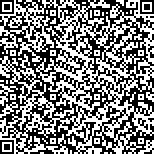| 引用本文: | 智喜洋,侯晴宇,张伟,孙晅.融合多特征的天基典型目标光学识别方法[J].哈尔滨工业大学学报,2016,48(10):44.DOI:10.11918/j.issn.0367-6234.2016.10.006 |
| ZHI Xiyang,HOU Qingyu,ZHANG Wei,SUN Xuan.Optical identification method of space typical targets based on combined multi-feature metrics[J].Journal of Harbin Institute of Technology,2016,48(10):44.DOI:10.11918/j.issn.0367-6234.2016.10.006 |
|
| 摘要: |
| 为满足天基近距离目标高精度探测和识别的需求,提出一种多特征融合的卫星局部识别方法.首先分析卫星局部物理特征,构建了融合形态学多特征参量的局部构件分形聚类参数集,并建立基于聚类特征加权组合的构件聚类模型.利用该模型即可实现通过计算待识别目标隶属于各构件类的匹配性概率来识别目标;在此基础上,针对空间目标光学成像的图像降质、局部遮挡等问题,提出了目标识别算法,并以其在实际应用中的识别概率为依据,结合粒子群算法迭代优化加权系数,提高了识别算法效率与鲁棒性;最后利用4类典型卫星及伽利略卫星缩比模型对识别算法进行了数字仿真和半物理实验验证.实验结果表明,在低对比度、SNR仅为5,且构件存在较严重变形与互遮挡的情况下,算法仍能有效识别卫星构件,识别概率优于0.95.
|
| 关键词: 天基目标识别 卫星局部 多特征参量 聚类模型 识别算法 |
| DOI:10.11918/j.issn.0367-6234.2016.10.006 |
| 分类号:TP751.1 |
| 文献标识码:A |
| 基金项目:国家自然科学基金(61605035) |
|
| Optical identification method of space typical targets based on combined multi-feature metrics |
|
ZHI Xiyang, HOU Qingyu, ZHANG Wei, SUN Xuan
|
|
(School of Astronautics, Harbin Institute of Technology, Harbin 150001, China)
|
| Abstract: |
| This paper proposes a new method based on combined multi-feature metrics in order to meet the requirements for identification of satellite local targets. Firstly, we analyze the local physical characteristic of satellite, and construct the local component fractal clustering parameter sets of the fusion morphology multi-feature metrics. Then, a component-clustering model is formulated based on weighted combination of clustering features. Consequently, an optical identification algorithm is proposed to deal with the problems of image degradation and partial occlusion in optical imaging of space targets. Based on the recognition probability in its practical application, the efficiency and robustness of the recognition algorithm is improved by using optimal weighting coefficients in the iteration of particle swarm optimization algorithm. Finally, using four typical satellites and Galileo satellite scaled model, the performance of the identification algorithm is analyzed and verified. Experimental results show that the algorithm is able to identify the satellite component and the identification probability is no less than 0.95, in the case of low contrast, SNR being 5 and severe deformation and mutual occlusion of the components.
|
| Key words: space target identification satellite local combined feature metrics clustering model identification algorithm |







